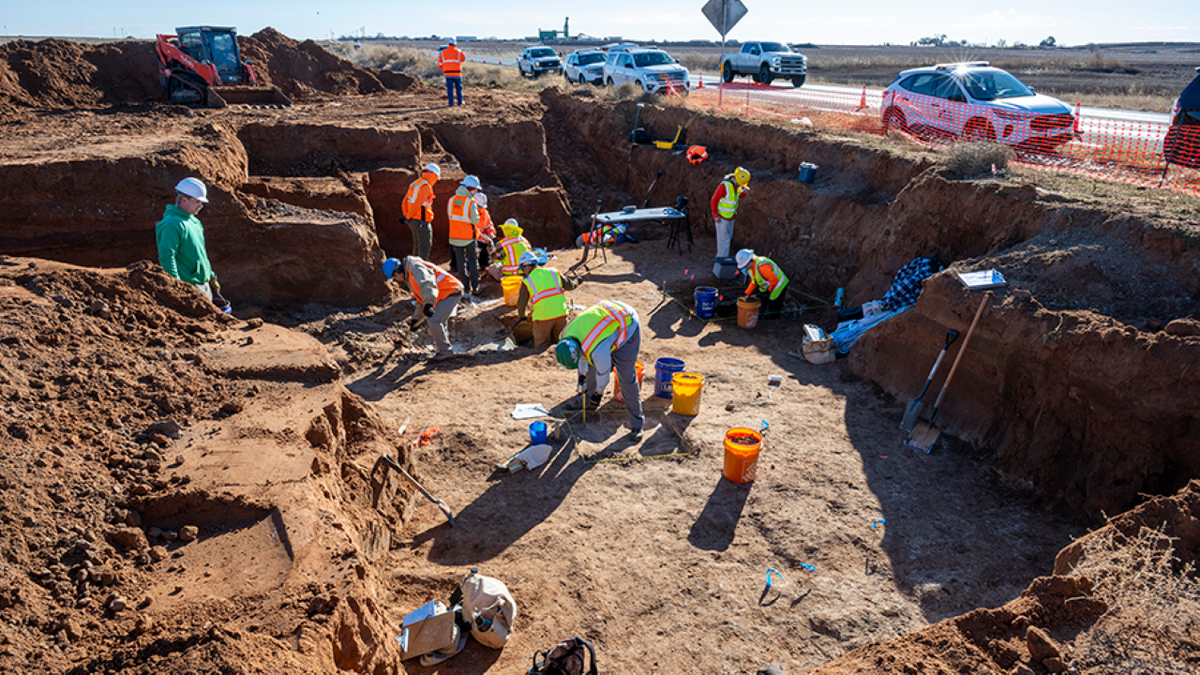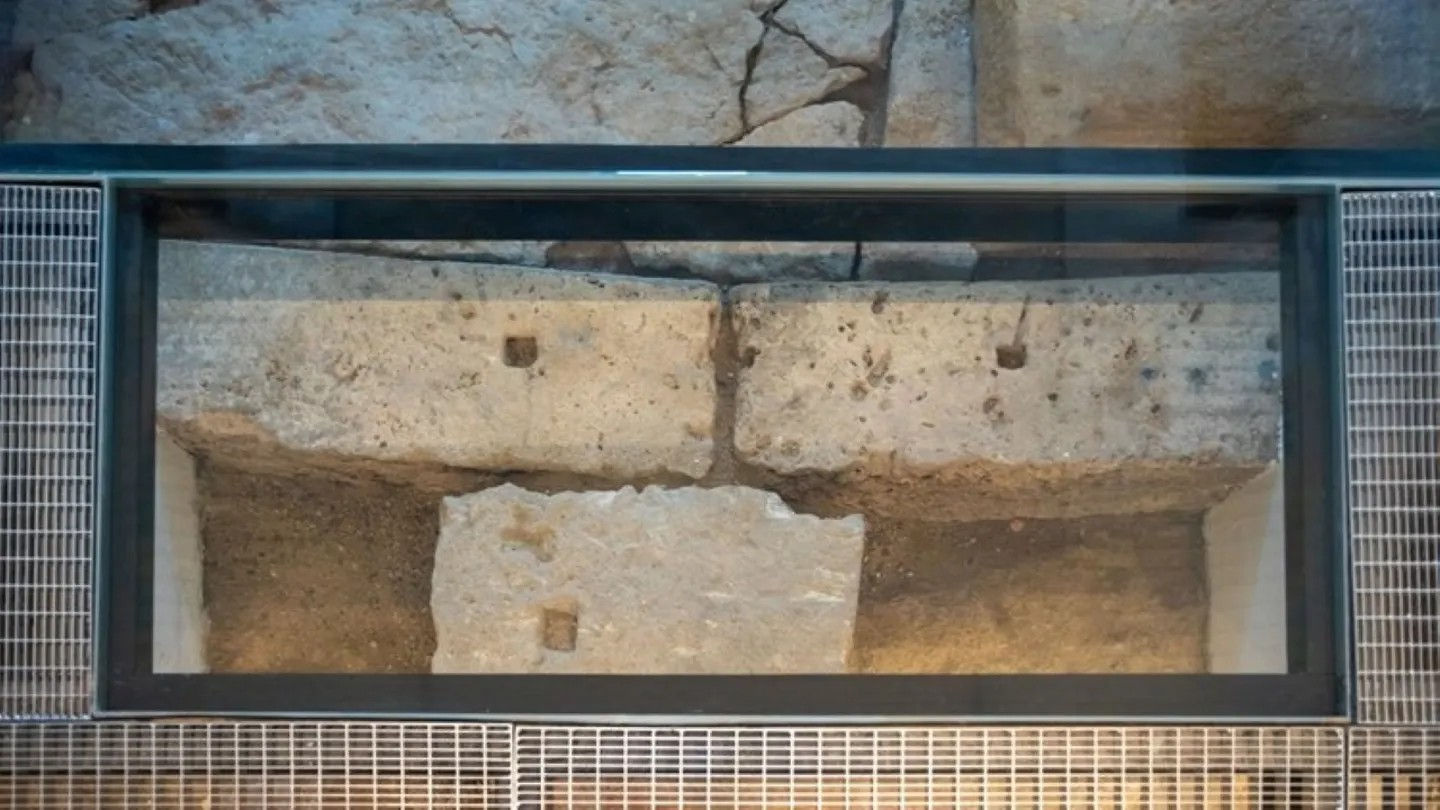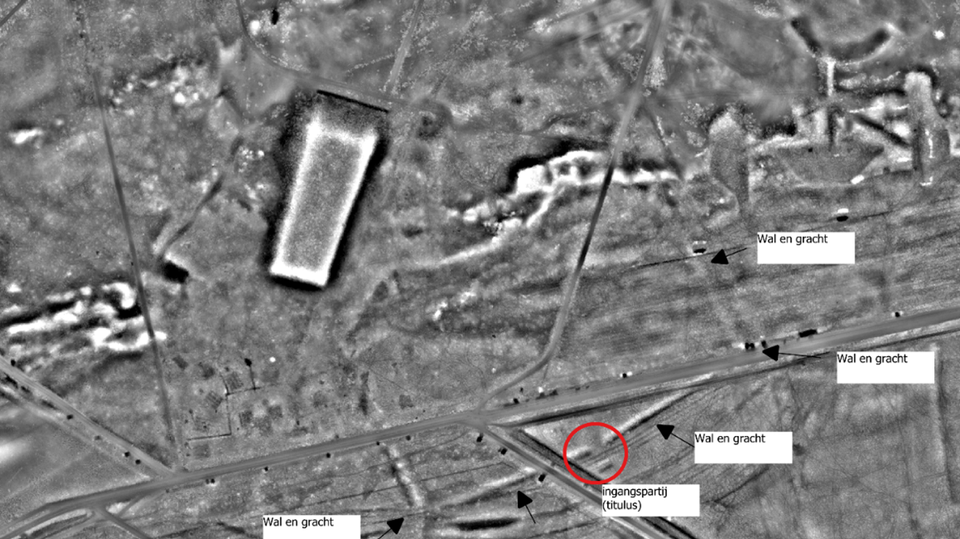A medieval palace in the Scottish Borders is the subject of an international search.
Archaeologists from around the world are taking part in a dig to identify a medieval palace in the Borders
In a field near the village of Ancrum, archaeologists and students from Australia, the United States, Canada, and the Netherlands have gathered.
Prior excavations have uncovered a "substantial" medieval structure, although they have not revealed its function.
Ian Hill, an archaeologist, stated: "We are now trying to determine exactly what the building was."
Work will continue on the Mantle Walls site for two weeks
According to records, William de Bondington, the Bishop of Glasgow, spent his summers at Ancrum, close to Jedburgh, from the 1230s until his passing in 1258.
Alexander II signed at least three charters there in 1236 while the palace hosted Scots royalty.
A sizable structure on the Mantle Walls hillside was gradually eroded over the years as stone was used to construct some of the neighboring village.
The site was still mentioned in local legend as the location of the bishop's residence, and digging in the area frequently turned up fragments of medieval and post-medieval ceramics as well as human bones.
Alistair Munro, who lives nearby and uses dowsing rods to find subsurface water supplies, visited Mantle Walls numerous times in the 1990s.
Alistair Munro has spent more than 30 years searching for answers
His original discovery of sizable stonework beneath the harvested field aroused the interest of historians and archaeologists.
After a geophysical study in 2011 that largely supported Alistair's mapping, excavations were conducted the following year and once again in 2019.
Archaeologists are certain that Mantle Walls was the home of the Bishop of Glasgow based on discoveries like medieval ironwork and large stone walls.
However, conclusive evidence has yet to be discovered because many of the collapsed walls had been removed by builders in the 17th and 18th centuries and because metal detectorists are known to have been scouring the fields for many years.
Ian Hill from HARP Archaeology is leading the excavations
“Ever since I came here to try out my dowsing rods and found some structure, getting to the truth about this site has been a passion of mine. With each survey and dig we get more information, and hopefully over the coming weeks we'll be able to get closer to being able to say for definite what was here. We have archaeologists and students from all over the world helping us, which shows how much interest there is in getting the answers we're looking for”, Mr. Munro stated.
Mantle Walls has been designated as a scheduled monument of national importance based on the evidence from earlier archaeological surveys and excavations.
The focus of this most recent excavation, which will remain through September 16th, will be on three or four pits that surround the primary protected area.
The dig is being led by HARP Archaeology's Ian Hill.
Cambridge University student Sully Newman is taking part in the dig
Although a sizable medieval structure has already been found, he added: "While a substantial medieval building has already been identified we don't know the extent of the site or if there were more buildings. We would love to be able to say for sure what the site was, and hopefully boundary walls and other outlying structures will enable us to do that."
The two-week project attracted 14 archaeology master's students from all over the world.
Sully Newman, a student at Cambridge University, traveled there with his trowel from London.
He said: "It is great to be here with students and archaeologists from all over the world to gain experience of working on such an important dig. We are learning about medieval history in this part of the world and how this building would have fitted in to the landscape of that time."











